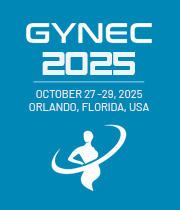Title : High-risk HPV DNA testing in self-collected vaginal samples compared to cytological screening for cervical cancer detection: A Brazilian multicenter study
Abstract:
Introduction: Cervical cancer remains a significant public health issue, particularly in low- and middle-income countries, where screening coverage is often limited. Alternative strategies such as self-sampling combined with high-risk HPV testing may improve detection rates and increase participation in screening programs. This study aims to compare self-sampling combined with high-risk HPV testing (hrHPV+) versus the Papanicolaou test (Pap) as two modalities for cervical cancer screening.
Methods: This was a cross-sectional study conducted at two primary healthcare units in Parnamirim, RN, Brazil. The study was approved by the Research Ethics Committee (CAAE: 83854924.9.2006.0253). Women aged 25 to 64 who had not undergone a Pap test in the past four years or more were included. Participants outside the defined age range, with a history of hysterectomy, or who had recently undergone a Pap test were excluded. Participants were stratified into two groups: (1) the Self-Sampling Group, which received a “Coari” self-collection kit, and (2) the Pap Group, which underwent conventional cytological sampling. Self-collected samples were analysed using the COBAS HPV kit, which detects HPV types 16, 18, and 12 other high-risk types. Women with abnormal results (Pap ≥ ASC-US or hrHPV+) were referred for colposcopy and biopsy.
Results: A total of 160 self-sampling/HPV tests were performed, yielding 18 positive results (HPV16 = 9; HPV18 = 1; other high-risk types = 14). Women who tested positive for high-risk HPV were referred for colposcopy and biopsy. In the Pap test group, 121 samples were collected, with 11 abnormal results: ASC-US (n = 8), HSIL (n = 1), LSIL (n = 1), and AGC-NOS (n = 1).
Conclusion: Self-sampling combined with hrHPV+ testing demonstrated higher sensitivity for detecting positive cases and showed good acceptability among women, supporting its potential as an effective screening strategy alongside the conventional model.



